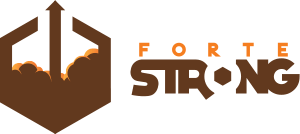Ok, today we are going to start off on a hot topic, but a very important issue that needs to be addressed. The big question that many have asked themselves or, rather, SHOULD ask themselves is: Am I helping or enabling? First of all lets look at the difference between the two. HELPING is assisting someone with a situation, task, etc…that they are incapable of doing themselves. ENABLING is doing something for someone who is fully capable of doing it themselves. Keep this in mind when you are involved with your struggling young adult.
For example: I recently had to replace a broken serpentine belt in my vehicle. I knew how to do it but was unable to lift the pulley down AND at the same time slide the belt through the maze of pulleys on the engine. I went across the street to my friend Dave’s house (Dave is a mechanic btw) and asked if he could give me a hand. Dave was able to put pressure on the pulley allowing me to adjust and put the belt where it was supposed to go. This is a basic example of someone (Dave) helping rather than enabling. Conversely, if I were to ask Dave to come “help” me but I sat and watched him do the whole thing (assuming it wasn’t a two person job) he would have been enabling me.
As a parent it can be difficult to determine whether you are helping or enabling. After all, the first instinct you have as a parent is to provide for your children, and society tells us that really good parents give their kids the opportunities and things that they never had growing up. But that is where we need to stop and think.
A recent article tells us the story of Jared. Jared is a 25 year old man who works a good construction job full time and makes a good income. He still lives at home with his parents though, and spends most of his free time playing video games and watching tv. Jared’s parents are responsible for the mortgage, food, paying utilities, doing chores around the house etc…while Jared sits on the couch or in his bedroom and enjoys a life without much responsibility. He is fully capable of providing for himself but doesn’t see the need as to why he should be living on his own. Because of the money he saves, it is usually spent on buying new video games, clothes, movies, long vacations or whatever he wants. Jared’s parents are enabling him because he is in good health, fully capable of providing for himself and living on his own as an adult. Jared is essentially experiencing “Failure to Launch”
Take a moment and look at the situations involving your son and ask yourself this question, “Am I helping or enabling?” In the future, when you find yourself contemplating whether you should help your son or not, first ask yourself the question, “Am I helping or enabling?” then make your decision. This will take some time to master and at times it will involve some tough love, but in the end it will strengthen the bond between you. As always, we invite you to take a look at Forte Strong for more info and tips on how to help your son unlock his potential.
About The Author
Brook Price dedicated himself to helping others early in his life. He grew up in Sunny Orange County California, then joined the Marine Corps at the age of 21 serving five and half years as a helicopter crew chief and then as chief accountant. His journey with this type of work began when he volunteered as a Young Marines Instructor during his time in the Marines, helping kids get off the street, improve their lives and develop as a leader. After his tour Brook left the Marines to pursue a career in experiential therapy by attending Southern Utah University where he majored in outdoor recreation with a minor in psychology.
Brook has seventeen years experience working for a variety of different therapeutic and transitional programs across the nation. His thirst for knowledge drove him to learn and study successful therapeutic models and programs across the country, most notably Outward Bound. Brook has experience working with therapeutic, residential, military, wilderness and transitional programs for adults and adolescents.
